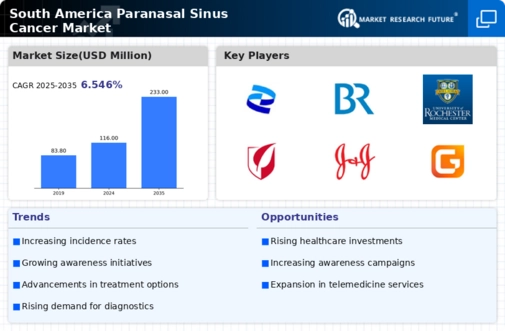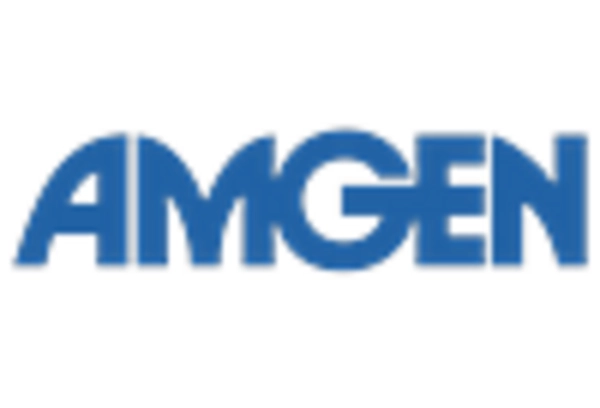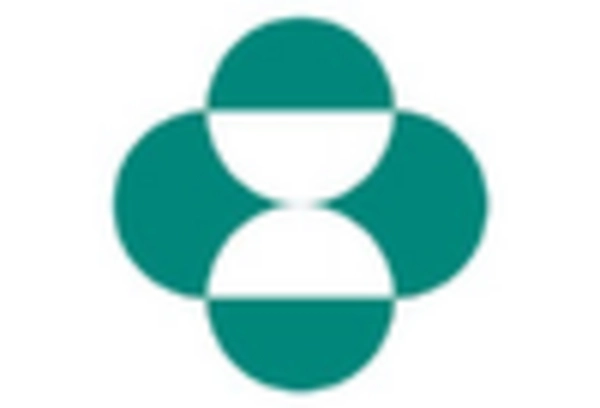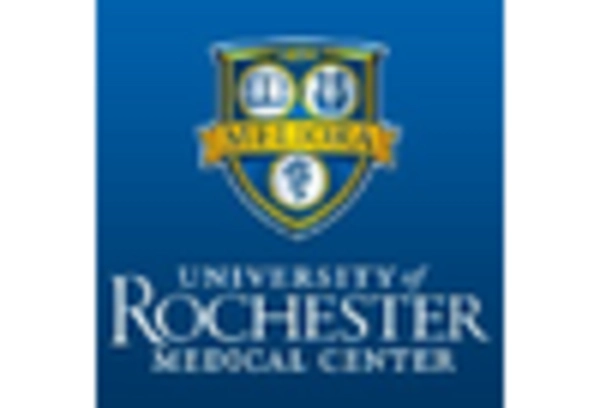Growing Aging Population
The demographic shift towards an aging population in South America significantly impacts the paranasal sinus-cancer market. As individuals age, the risk of developing various cancers, including paranasal sinus cancer, increases. Current statistics indicate that around 15% of the population in South America is over 65 years old, a figure projected to rise in the coming years. This demographic trend suggests a potential increase in the incidence of paranasal sinus cancer, thereby driving demand for treatment options and healthcare services. Consequently, the paranasal sinus-cancer market is poised for expansion as healthcare providers adapt to the needs of an older population.
Enhanced Diagnostic Technologies
The advancement of diagnostic technologies plays a pivotal role in the paranasal sinus-cancer market. Innovations such as advanced imaging techniques and molecular diagnostics are becoming more prevalent in South America. These technologies facilitate early detection and accurate diagnosis, which are critical for effective treatment. For example, the adoption of MRI and CT scans has increased by approximately 20% in recent years, allowing for better visualization of sinus structures. As diagnostic capabilities improve, the paranasal sinus-cancer market is likely to benefit from earlier interventions and improved patient outcomes, ultimately driving market growth.
Increasing Healthcare Expenditure
The rising healthcare expenditure in South America is a crucial driver for the paranasal sinus-cancer market. Governments and private sectors are investing more in healthcare infrastructure, which enhances access to diagnostic and treatment facilities. For instance, countries like Brazil and Argentina have reported an increase in healthcare budgets by approximately 10% annually. This financial commitment allows for better screening programs and advanced treatment options, which are essential for early detection and management of paranasal sinus cancer. As healthcare systems improve, the paranasal sinus-cancer market is likely to experience growth due to increased patient access to necessary medical services.
Rising Public Awareness Campaigns
Public awareness campaigns regarding cancer symptoms and treatment options are gaining momentum in South America. Organizations and health authorities are increasingly focusing on educating the public about the risks associated with paranasal sinus cancer. These initiatives aim to promote early detection and encourage individuals to seek medical advice when experiencing symptoms. Recent surveys indicate that awareness levels have increased by 30% over the past few years, leading to more individuals seeking diagnostic services. This heightened awareness is expected to positively influence the paranasal sinus-cancer market by increasing patient referrals and treatment uptake.
Government Initiatives for Cancer Control
Government initiatives aimed at cancer control are becoming more pronounced in South America, significantly impacting the paranasal sinus-cancer market. Various countries are implementing national cancer control programs that focus on prevention, early detection, and treatment. For instance, Brazil's National Cancer Control Program has allocated approximately $500 million for cancer-related initiatives, which includes funding for research and treatment facilities. Such government support is likely to enhance the overall healthcare landscape, thereby benefiting the paranasal sinus-cancer market through improved access to care and resources for patients.


















Leave a Comment